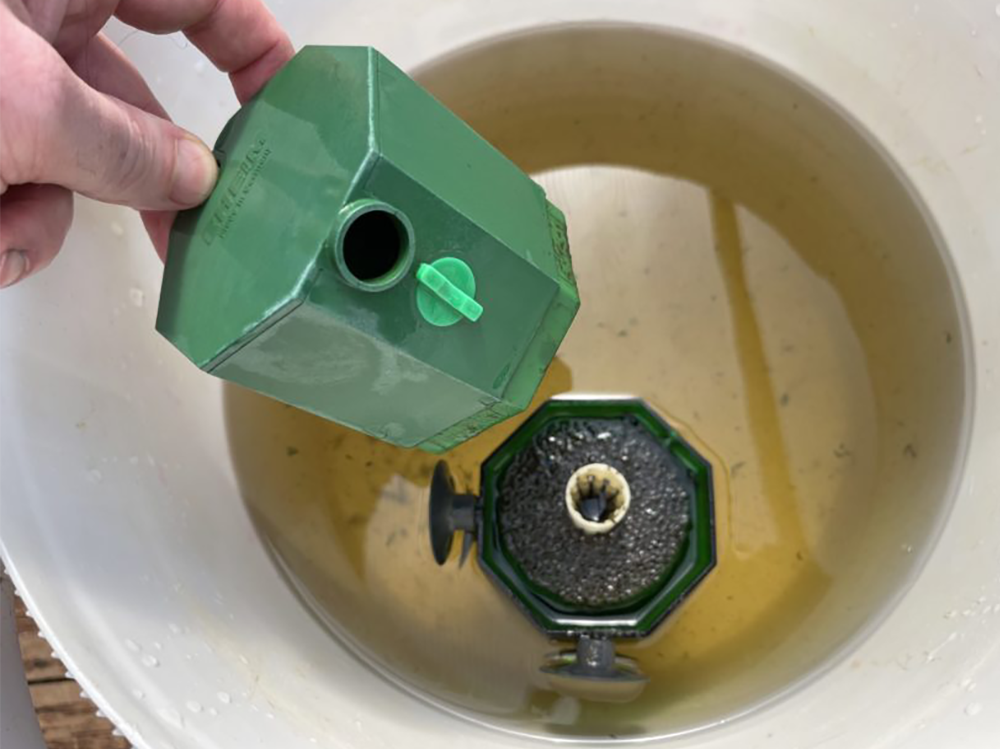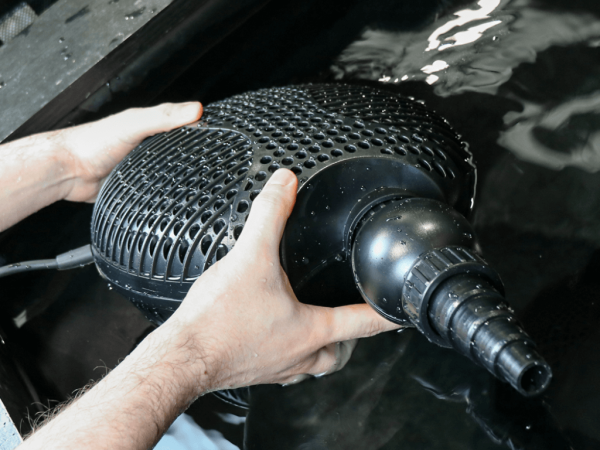How to clean an aquarium filter pump
Most fishkeepers know about the importance of cleaning filter sponges, and to only ever do it in old aquarium water, not tapwater. They also know to replace white filter wool and polishing pads when dirty, and to replace carbon every 30 days. But the filter pump itself, the beating heart of the filtration system also needs maintenance too.
A typical scenario goes like this: You switch the filter off to clean it, turn it back on and nothing happens. Or you have a powercut, the filter goes off and then doesn’t come back on again. Your first instinct is usually to contact the online store and report to them that there’s a fault with the filter. But 99 times out of 100 the pump won’t fire back up again simply because there is a build-up of dirt around the impeller.
Filter pumps and powerheads of all kinds contain just one moving part - the impeller. Looking like a plastic cross or a propellor, the impeller is attached to a cylindrical magnet that spins on either a steel or ceramic shaft. The powerhead - the motor of the unit - has all its electricals cast in epoxy resin to waterproof them, but inside it turns electricity on and off which in turn makes the magnet spin at high speed, making the impeller spin, which pushes the water.
The magnet doesn’t actually touch the sides of the impeller chamber so that it can spin nice and easily, but over time the chamber fills with brown slime and the magnet gets a coating of gunk too. This lessens the strength of the magnetism between the pump motor and the magnet. The other thing that can happen is that coarse debris like grains of gravel, snail shells or plant leaves can enter the impeller chamber and block or jam the impeller. The result, the pump goes off and won’t start again.
How to clean an impeller
So when you do your monthly filter maintenance clean the sponges, replace the polishing pads and carbon, but have a look at the impeller. This can be accessed on the underside of all filter pumps by removing the protective cover disc first by hand. With the pump switched off at the mains, grab the cross-shaped impeller and pull it out of the chamber.
The magnet will come with it, and if the shaft is ceramic, that can be removed too. A note of caution - ceramic impeller shafts are brittle and prone to breaking when handled so handle with care. They also sit inside a rubber bush at each end, so make sure they aren’t lost during cleaning.
Slide the impeller off the shaft and clean the impeller and magnet with a filter cleaning brush. This can also be done under the tap. Clean the impeller chamber inside the pump, replace the shaft, carefully replace the impeller, then replace the impeller cover. Once back in the water switch the pump on and it should fire back into action like it always did before.
Impeller blades and shafts can break, and very dirty impellers can ware or even jam in the chamber. Just like the tyres on a car, impellers and shafts are wearable parts so they won’t be covered under manufacturers warranties. For the best possible peace of mind, always carry a spare impeller or run two filters in tandem to cover in the event that one fails.
Internal filter clean step-by-step
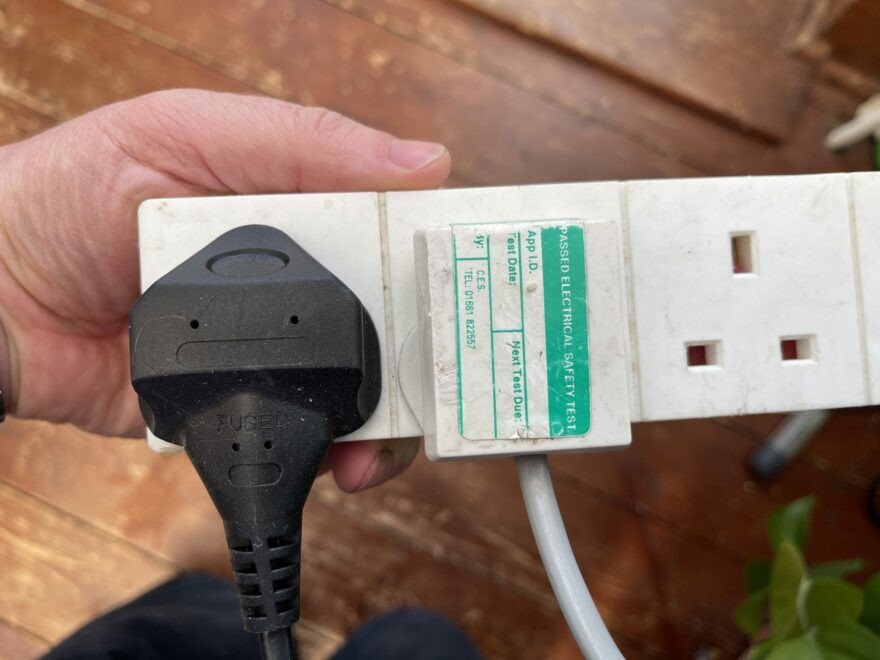
1. Turn off the power to the filter at the mains
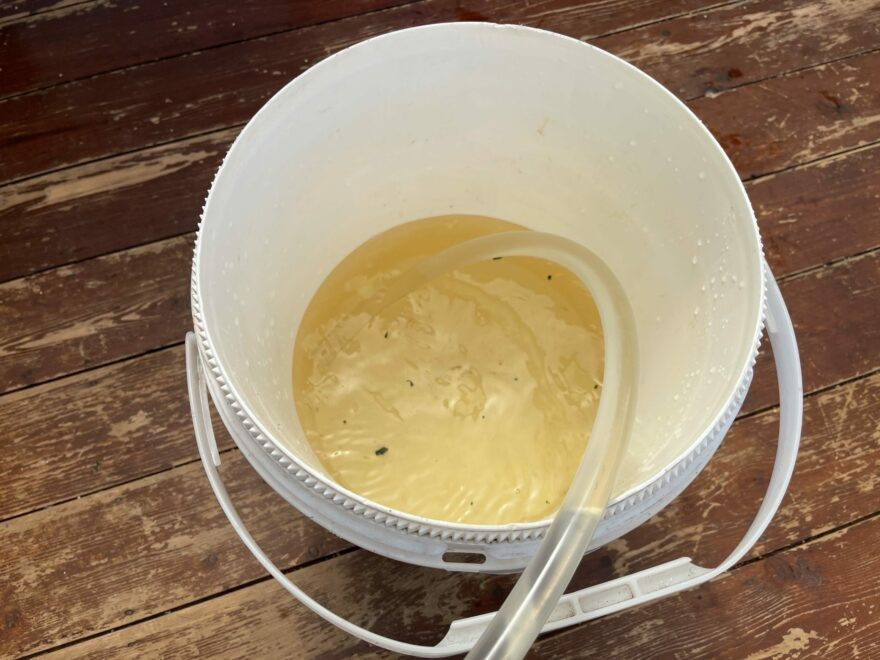
2. Syphon some aquarium water into a bucket
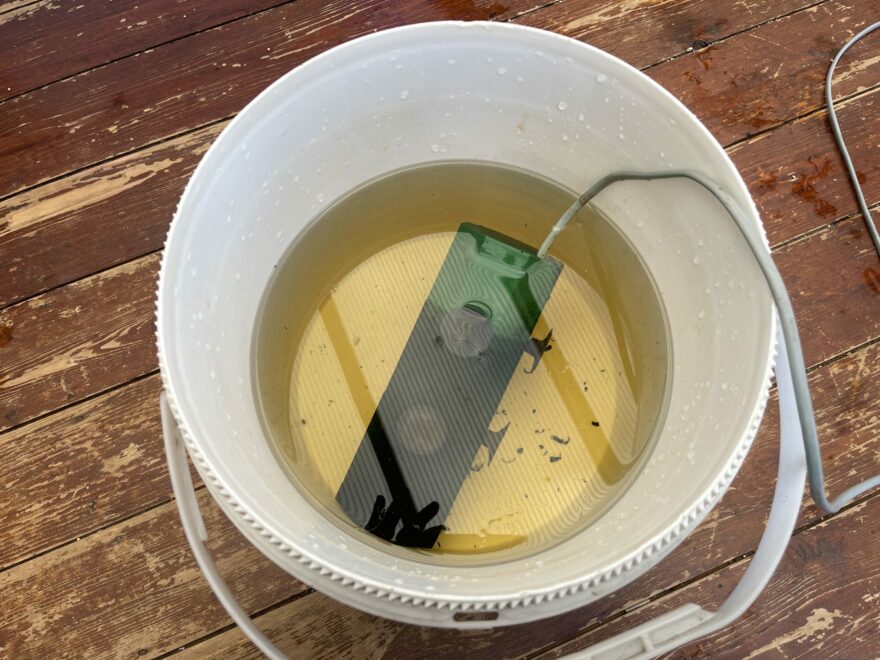
3. Place the filter canister in the bucket of water
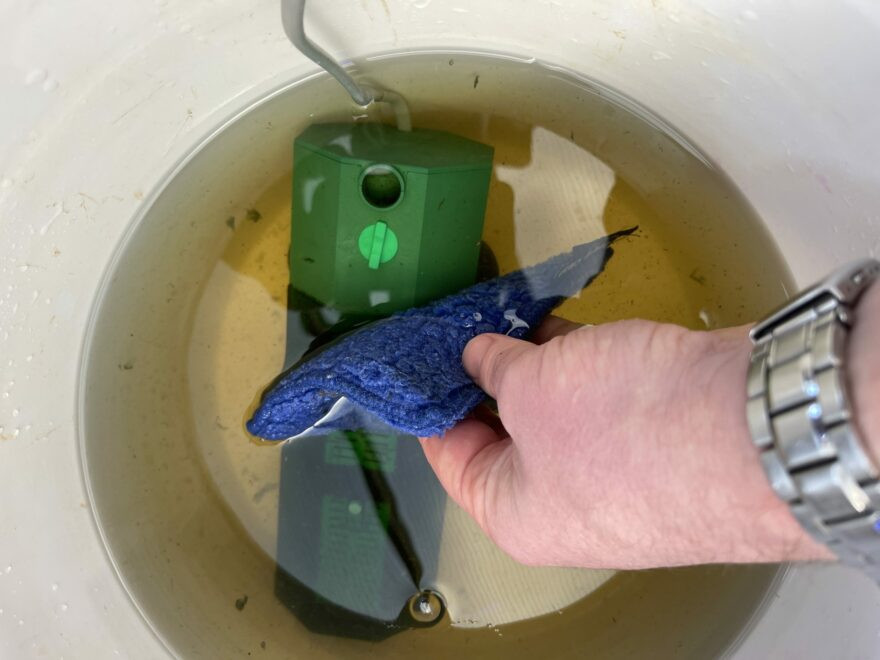
4. Clean the canister with your aquarium algae pad
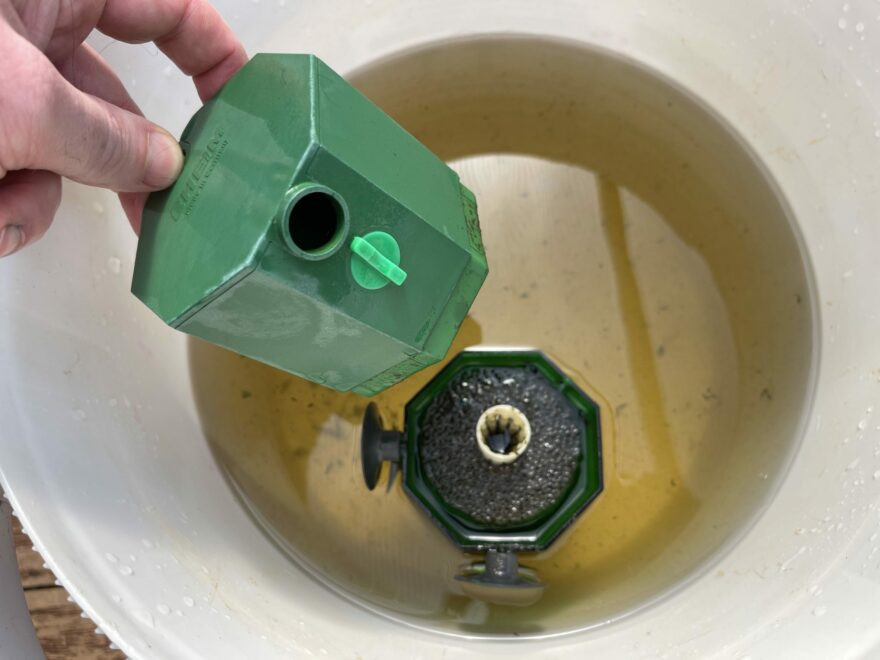
5. Remove the powerhead from the canister filter body
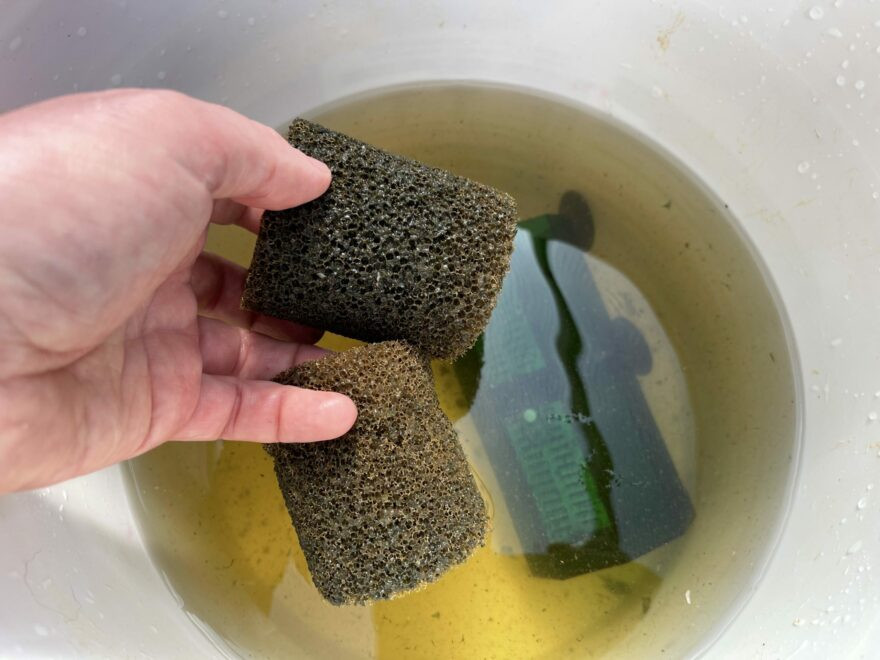
6. Remove the dirty sponges from the canister
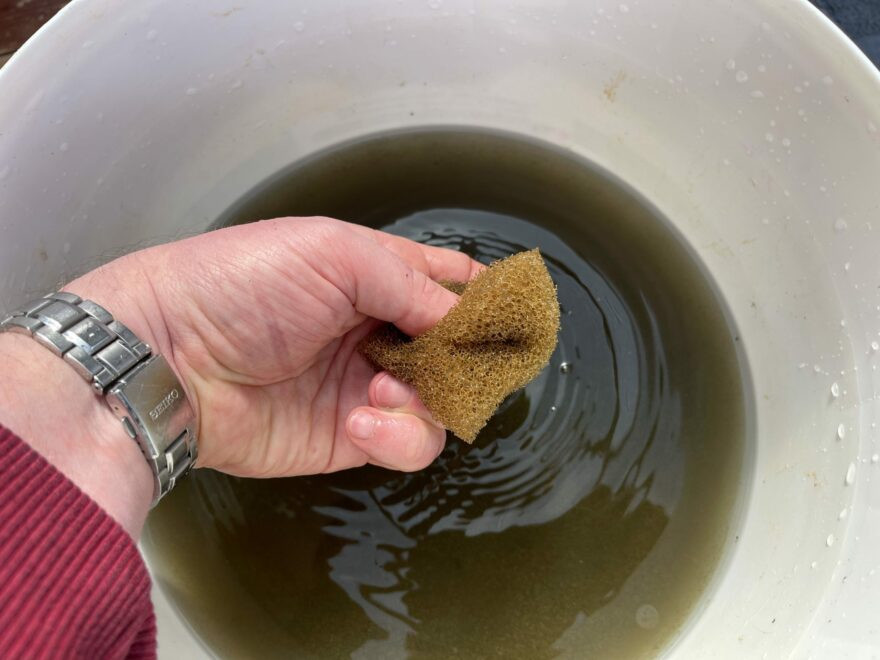
7. Clean the sponges in the old tank water in the bucket
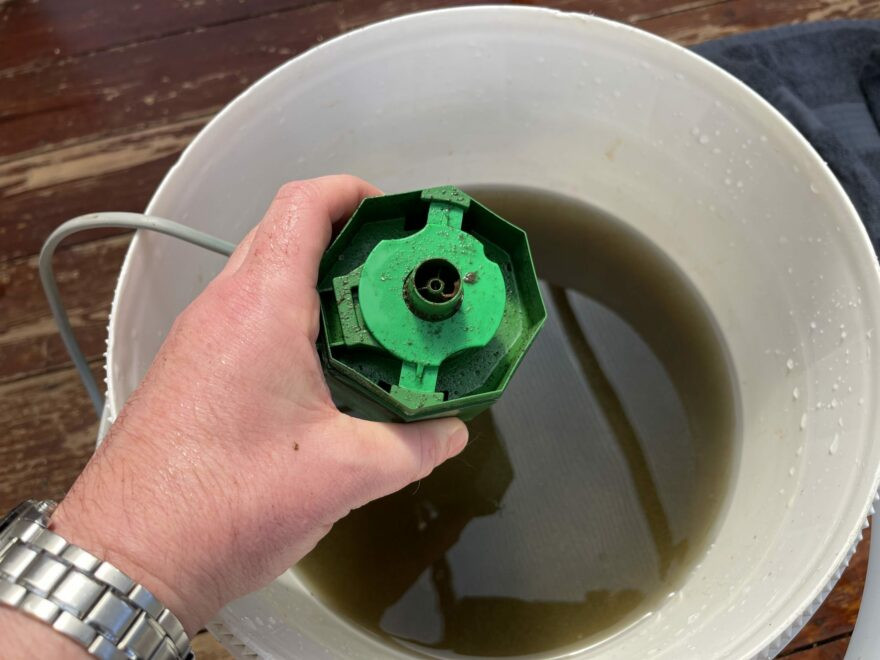
8. Turn the pump upside down to reveal the impeller cover
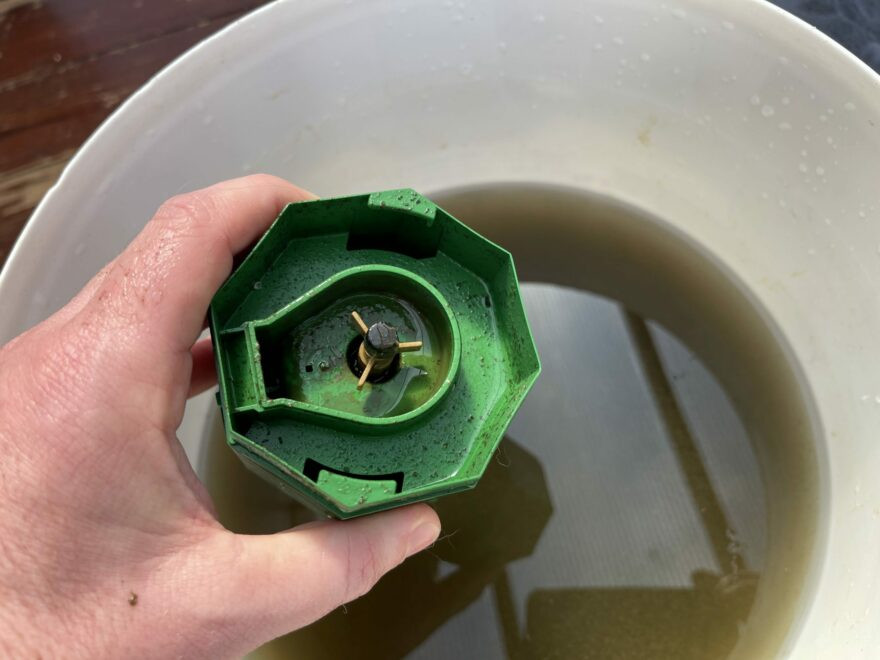
9. Remove the impeller cover
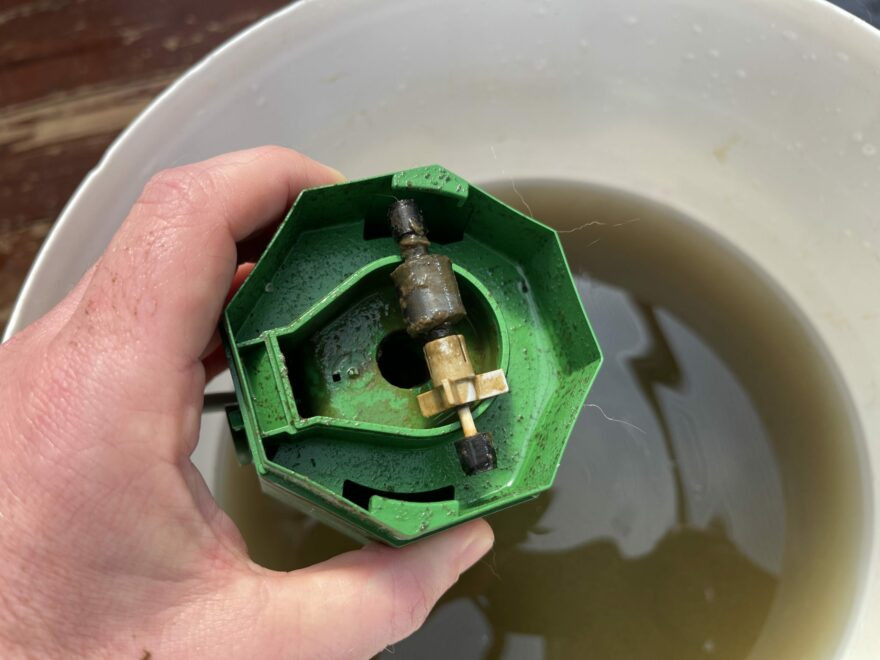
10. Remove and carefully clean the impeller
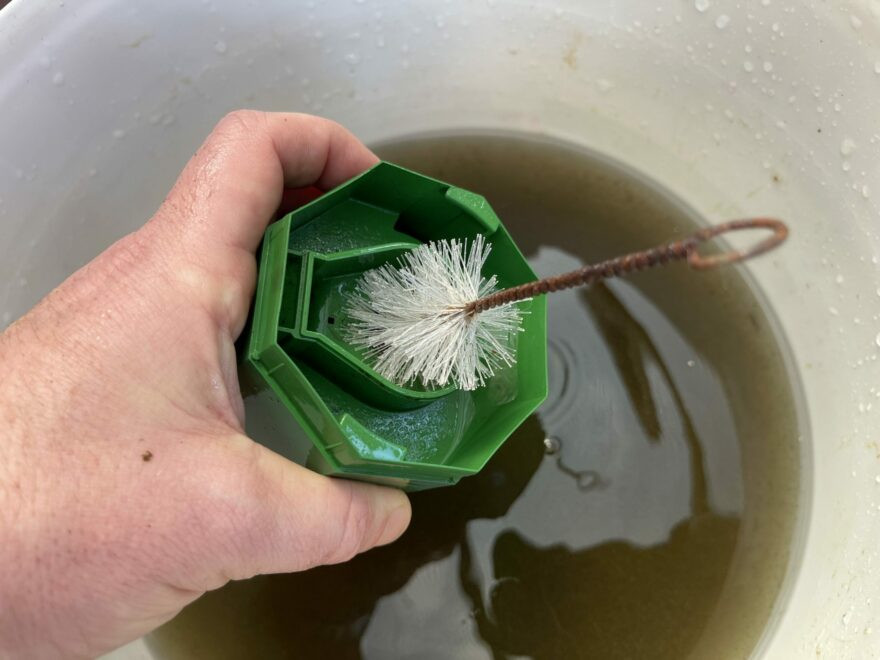
11. Clean the impeller shaft
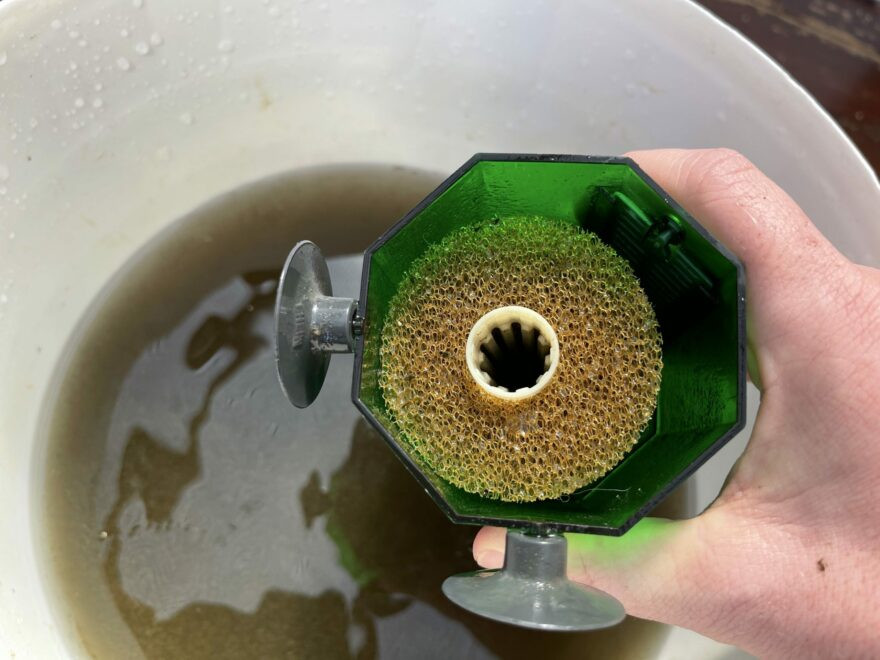
12. Put the clean sponges back inside the canister
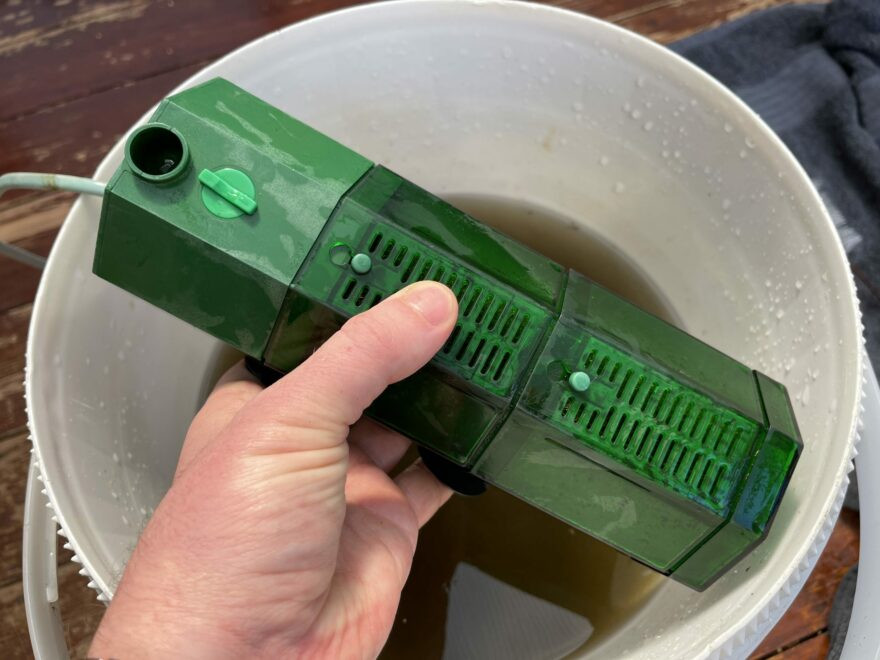
13. Reassemble the canister
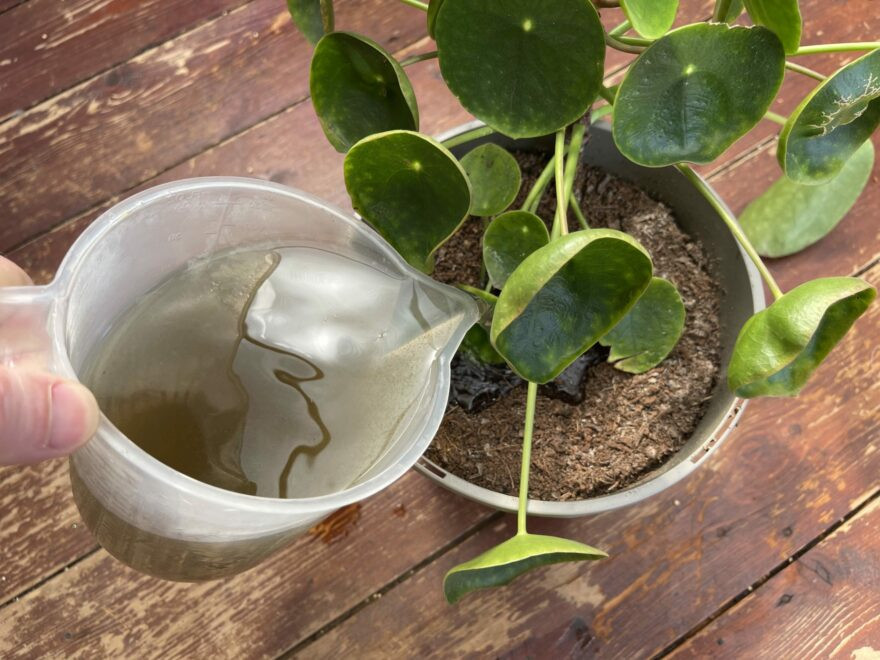
14. Use the old dirty tank water to water your plants
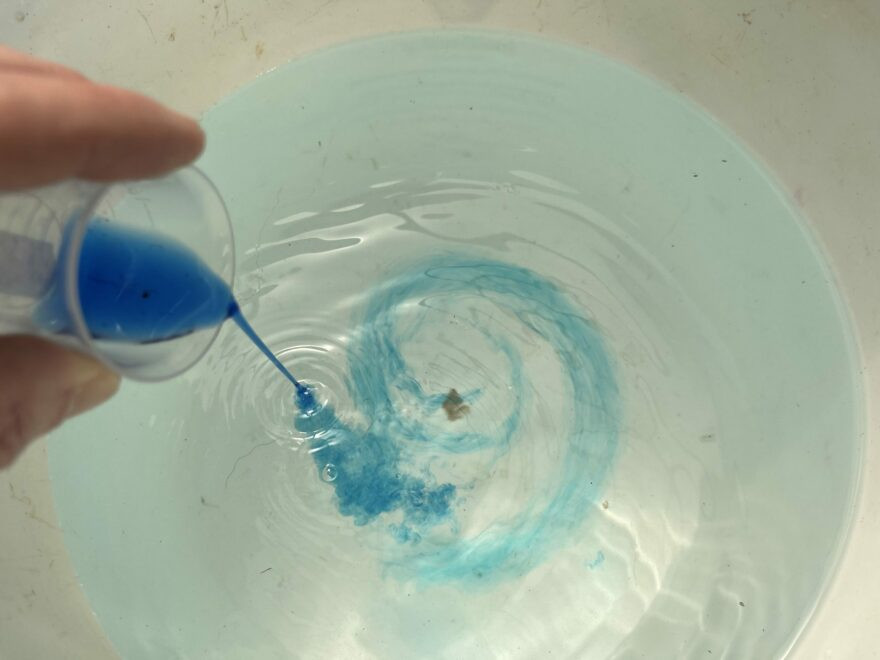
15. Replace the water from the tank with dechlorinated tapwater
Once your filter is nice and clean, you can switch out the filter media to further improve the power of your filtration system. Why not try one of our pro filter media ranges including Swell Aquarium Activated Carbon, Swell Aquarium Nitrate Remover Media, Swell Aquarium Phosphate Remover Media, Swell Aquarium Ultra Porous Biological Filter Media and Swell Aquarium Nitrate Remover Resin?




